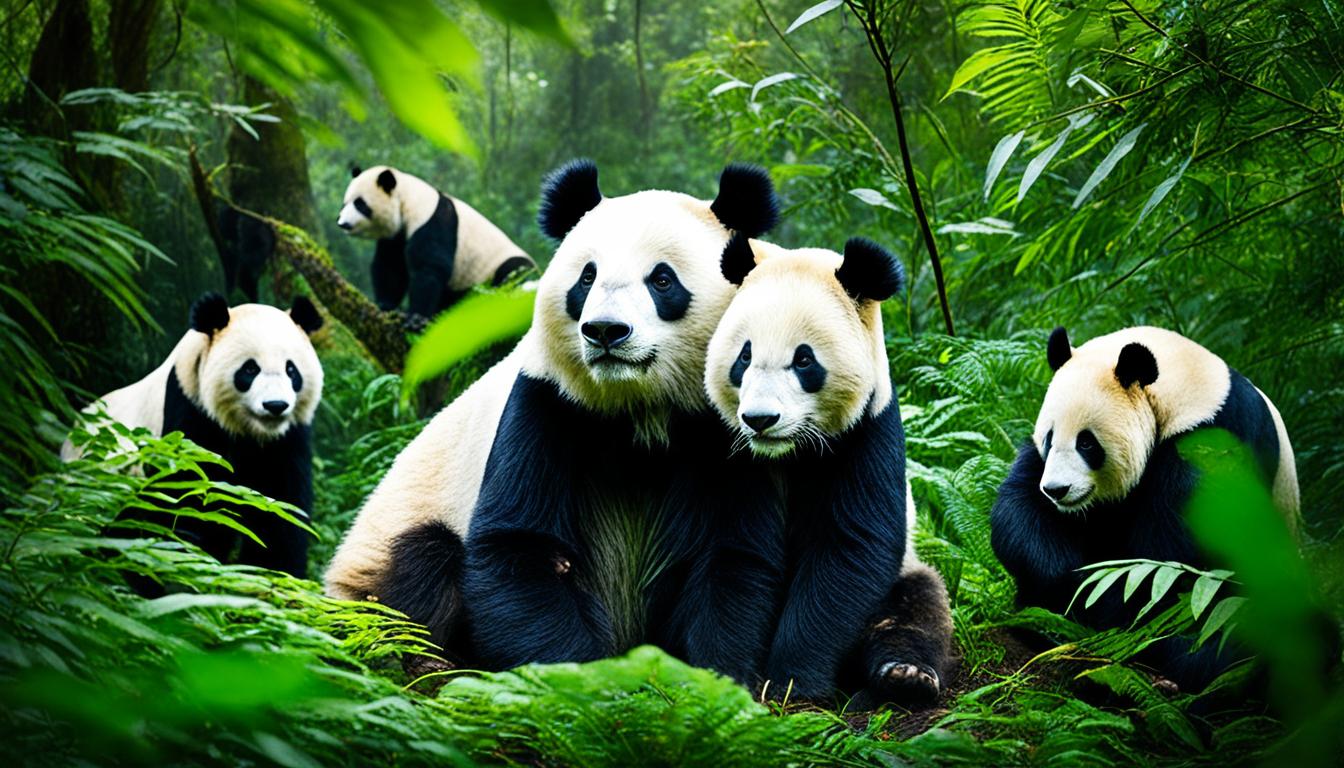Climate change is reshaping local wildlife, putting nearly 60% of species at risk of extinction. You can make a difference by planting native species, which support biodiversity and absorb CO2. Reducing waste by recycling helps lower your carbon footprint. Volunteering at local wildlife refuges aids habitat restoration, while engaging in citizen science contributes valuable insights to conservation efforts. Advocate for protective policies that empower your community's environmental initiatives. Every small action counts in this urgent fight against habitat loss. Discover even more impactful ways you can help local wildlife thrive amid these changes.
Key Takeaways
- Support local wildlife conservation efforts to protect habitats and promote biodiversity, which is essential for ecosystem health.
- Engage in community initiatives that restore natural habitats and raise awareness about the impacts of climate change on wildlife.
- Plant native species in your garden to enhance local ecosystems and provide food and shelter for wildlife.
- Participate in citizen science projects to contribute data on local wildlife populations and help inform conservation strategies.
- Advocate for sustainable practices and protective policies that mitigate climate change effects on wildlife and their habitats.
Importance of Wildlife Conservation
Wildlife conservation is essential not just for the survival of various species but also for the health of our planet. As you engage in wildlife conservation, you help protect not only endangered animals but also the ecosystems they inhabit.
These ecosystems play a significant role in regulating climate change, enhancing carbon sequestration, and maintaining biodiversity. Renewable energy sources, such as geothermal energy, are integral to reducing the carbon footprint, which helps mitigate climate change effects on wildlife.
Sadly, we've seen a shocking 69% decline in wildlife populations over the last 50 years, which underscores the urgent need for action.
By protecting wildlife, you contribute to the balance of greenhouse gases in the atmosphere, promoting healthier environments. Establishing protected areas is one effective climate adaptation strategy that safeguards threatened species, ensuring ecosystems remain resilient against the impacts of climate change.
Additionally, your support for wildlife conservation helps local communities thrive by promoting sustainable practices and preserving natural resources.
Impact of Climate Change on Wildlife
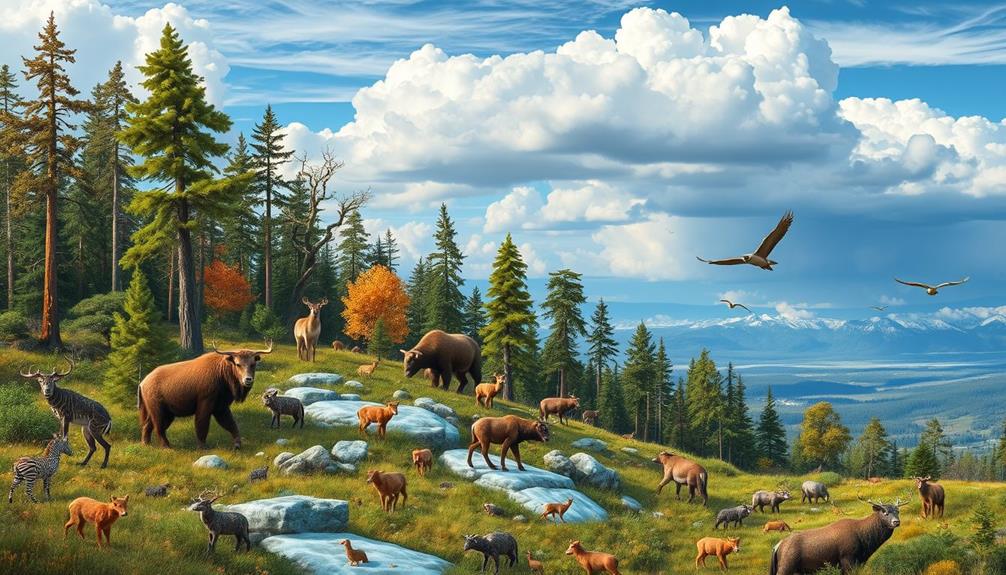
Climate change is putting many species at risk of extinction, with about 60% facing dire consequences if we don't act quickly.
As habitats shrink and conditions worsen, wildlife struggle to adapt, leading to challenges like increased mortality rates in vulnerable populations.
Dietary modifications can also play a role in wildlife health, as changes in food availability impact species survival.
You might be surprised to learn how these changes create a ripple effect that threatens our planet's biodiversity.
Species Extinction Risks
The threat of species extinction looms large as rising global temperatures and shifting ecosystems continue to disrupt the delicate balance of nature. Climate change poses a grave threat to biodiversity, with projections suggesting that up to 60% of global species could face extinction without immediate action.
The decline in wildlife populations has been staggering, with nearly 70% vanishing over the last 50 years, primarily driven by climate change and its impacts. Additionally, the impact of climate change on ecosystems can be compared to how Aboriginal art features distinctive styles that reflect the connection between culture and environment.
Rising temperatures create additional stressors, such as habitat loss and invasive species, that further exacerbate extinction risks. Many species struggle to adapt quickly enough to these changes, forcing them to migrate to new habitats. However, not all can make this shift, increasing their vulnerability to extinction.
For instance, while the Oceanic Whitetip Shark shows resilience, most wildlife isn't so fortunate.
You can contribute to conservation efforts that address these extinction risks. Supporting local wildlife organizations, advocating for sustainable practices, and reducing your carbon footprint can help protect vulnerable species.
Every action counts in the fight against climate change and its devastating effects on our planet's biodiversity. Together, we can work toward a more sustainable future for wildlife.
Habitat Loss Challenges
As species face increasing extinction risks, habitat loss emerges as a critical challenge exacerbated by climate change. Rising temperatures and changing weather patterns are forcing wildlife to migrate or confront extinction. An estimated 60% of global species could face extinction if we don't act urgently to address emissions and habitat degradation.
For instance, Africa's elephants are at risk of disappearing within 40 years due to habitat loss and poaching linked to climate-related changes. Additionally, the loss of biodiversity impacts food security and ecosystem health, making it essential to support sustainable agricultural practices like those promoted by Turtle Tree Seeds that focus on organic and heirloom varieties.
Natural disasters intensified by climate change, like wildfires and hurricanes, have become five times more frequent compared to 50 years ago, leading to catastrophic habitat loss for countless species. As habitats shrink and alter, wildlife faces greater vulnerability, complicating their struggle for survival amidst fierce competition for dwindling resources.
You can make a difference by supporting conservation efforts and advocating for policies that address climate change. By protecting wildlife and their habitats, you contribute to maintaining biodiversity and ensuring a healthier planet for future generations.
Changing Ecosystems and Habitats
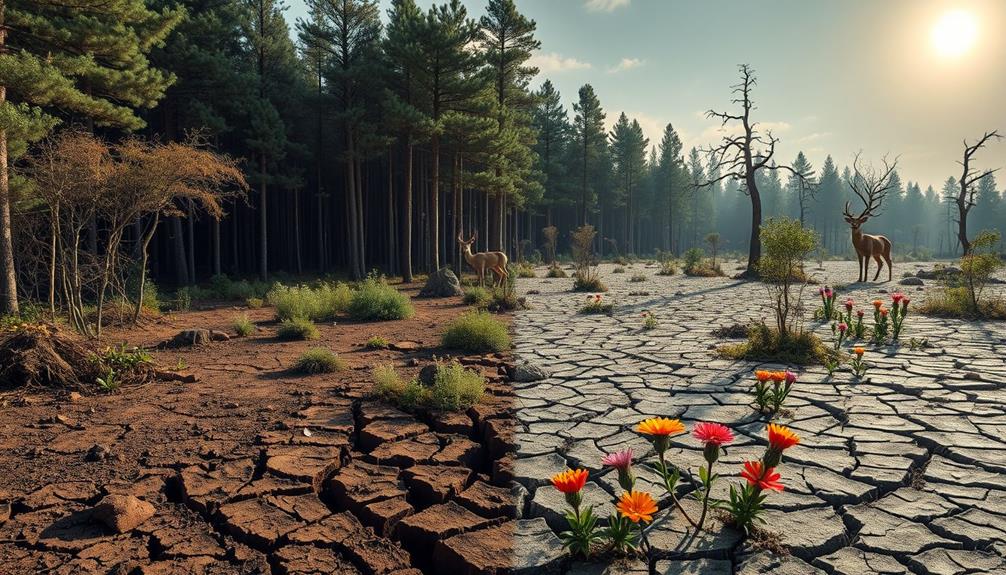
As you observe the effects of climate change, you'll notice how ecosystems are disrupted, leading to habitat loss for many species.
This not only forces wildlife to migrate but also invites invasive species that can threaten native populations.
For instance, the increased temperatures can impact aquatic environments, affecting species like fish and amphibians, which rely on stable conditions.
Understanding these changes is essential for finding effective solutions to protect our local environments, such as implementing eco-friendly products that can help mitigate further damage.
Ecosystem Disruption Effects
Climate change is reshaping ecosystems and habitats in profound ways, presenting significant challenges for local wildlife. Rising temperatures are causing ecosystem disruption, which leads to imbalances in species populations. As habitats change, many plants and animals must adapt to new environments where competition for resources intensifies. This habitat loss can threaten survival and drive species to extinction.
Engaging in healthy kid play not only promotes well-being but also fosters awareness of environmental issues among children. Understanding the importance of nature-based play can inspire future generations to protect local wildlife and their habitats.
Consider migratory birds; altered migration patterns due to climate fluctuations can disrupt their breeding cycles. For instance, if food sources don't coincide with their arrival, these birds may struggle to survive.
The marine food chain also suffers as warmer oceans hinder nutrient circulation, reducing phytoplankton, which is essential for marine life. This impacts the entire ecosystem, affecting everything from tiny fish to larger predators.
Additionally, some species face extreme threats; salmon in North America are experiencing decreased reproduction rates due to rising water temperatures.
The climate crisis not only disrupts individual species but also jeopardizes the intricate connections that sustain entire ecosystems. As you witness these changes in your local environment, remember that your awareness and actions can contribute to addressing this critical issue.
Habitat Loss Solutions
Finding solutions to habitat loss is essential for maintaining biodiversity and ecosystem health. As global temperatures rise and extreme climate events become more common, you can take action to help wildlife and restore balance in ecosystems.
One effective approach is habitat restoration, which involves rehabilitating degraded lands to create suitable environments for various species. Additionally, understanding the impact of mental health support on community well-being can enhance conservation efforts, as healthier communities are more likely to engage in and prioritize environmental initiatives.
Supporting local conservation efforts is also vital. By working together with local communities, you can help establish protected areas that safeguard essential habitats from further destruction. This collaborative effort not only benefits wildlife but also strengthens community ties and promotes sustainable practices.
Engaging in conservation and climate action initiatives can make a significant difference. Consider participating in tree-planting events or advocating for policies that prioritize habitat preservation. Remember, even small actions can lead to substantial impacts over time.
Ultimately, addressing habitat loss requires a collective commitment. By recognizing the importance of healthy ecosystems and taking steps to protect them, you contribute to the survival of countless species facing the threat of extinction.
Your efforts can foster resilience in natural environments, helping both wildlife and local communities thrive amid changing conditions.
Animal Health and Adaptation
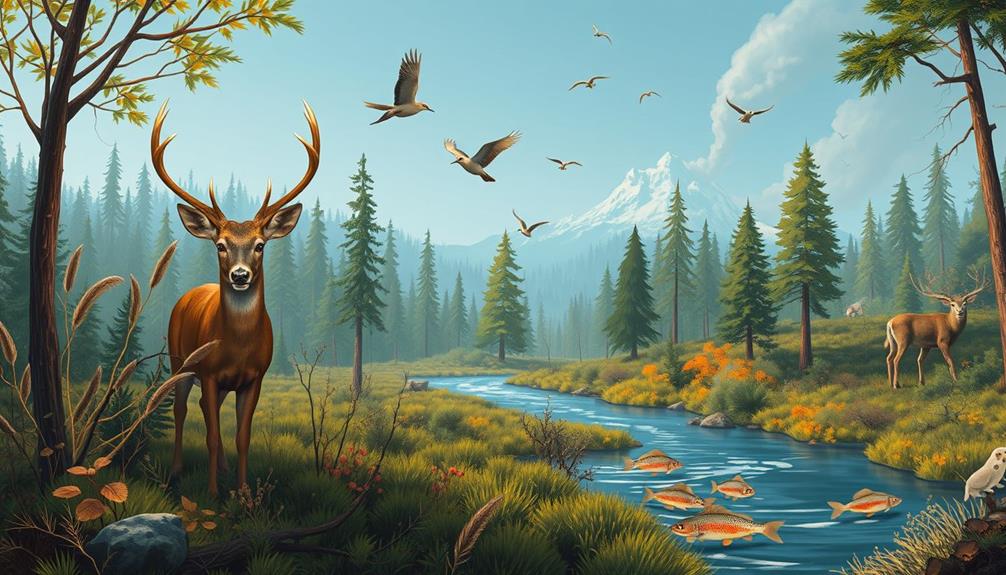
In the face of changing environments, animal health and adaptation are increasingly intertwined with the effects of climate change. As habitats shift, many animals find themselves migrating to seek suitable conditions for survival. This movement can disrupt local ecosystems, leading to reduced biodiversity, which in turn increases competition for resources.
For some species, like those closely tied to their native environments, adapting to these rapid changes becomes a formidable challenge. Additionally, stress factors such as yoga for back pain management can also be applied metaphorically, as animals must find ways to cope with the physical and environmental stressors they encounter.
Invasive species often exacerbate this situation by introducing diseases that further threaten the health of native plants and animals. These new pressures put added stress on ecosystems already struggling with the impacts of climate change. Wildlife health suffers when seasonal events, such as food availability and breeding cycles, become mismatched due to altered climate patterns.
To help local wildlife adapt, you can support conservation efforts that promote biodiversity. By protecting natural habitats and minimizing the spread of invasive species, you contribute to healthier ecosystems. Your actions can play a crucial role in ensuring that both animal health and adaptation remain resilient in the face of climate change.
Nature-based Solutions for Conservation

As wildlife face increasing pressures from climate change, Nature-based Solutions (NbS) emerge as a powerful tool for conservation. These solutions leverage natural processes like reforestation and wetland restoration to support biodiversity and enhance ecosystem services.
Utilizing natural ingredients, like butter's nutritional benefits, can inspire sustainable practices in agriculture. By implementing NbS, you can play a significant role in climate adaptation and help local habitats thrive.
Here are a few impactful nature-based solutions you can support:
- Agroforestry: Integrating trees into agricultural landscapes boosts productivity and carbon sequester.
- Mangrove Restoration: Protecting and restoring mangroves safeguards coastal ecosystems while reducing storm impacts.
- Protected Areas: Establishing these areas provides safe habitats for wildlife and maintains essential ecosystem functions.
Investing in NbS can also create local jobs, contributing to economic stability. The Global Climate Action initiative is mobilizing funds, aiming to implement these solutions widely, especially in vulnerable regions.
With healthy ecosystems potentially providing 37% of the carbon reductions we need for climate goals, your support for nature-based solutions not only benefits our planet but also enhances resilience for wildlife in the face of climate challenges.
Let's embrace these strategies for a sustainable future.
Community Engagement Strategies
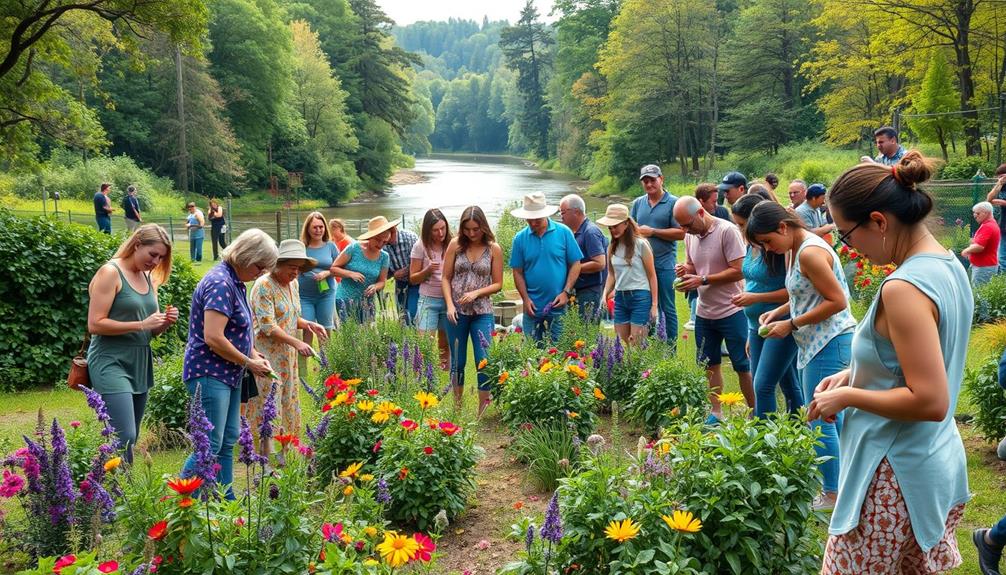
Community engagement strategies play a crucial role in wildlife conservation, ensuring that local needs align with environmental protection goals. When you actively participate in conservation efforts, you help foster a sense of stewardship for local ecosystems, much like how understanding BPD dynamics can enhance interpersonal relationships.
By getting involved in citizen science initiatives, you can contribute valuable data that enhances understanding of local wildlife and their habitats, making a real difference in conservation outcomes.
Advocating for pedestrian access and preserving natural spaces in your neighborhood not only encourages public support for wildlife protection but also benefits community well-being. Join local conservation groups that offer educational opportunities, empowering you and your neighbors to learn about biodiversity and effective conservation strategies.
These programs can deepen your connection to the environment while addressing pressing issues like wildlife crime by involving local populations in protecting their natural resources.
Ultimately, engaging your community in wildlife protection creates a collaborative approach to conservation. Together, you can make informed decisions that not only benefit local ecosystems but also strengthen your community.
Embrace these strategies and watch as your efforts contribute to a healthier environment for both wildlife and residents alike.
Actions Individuals Can Take
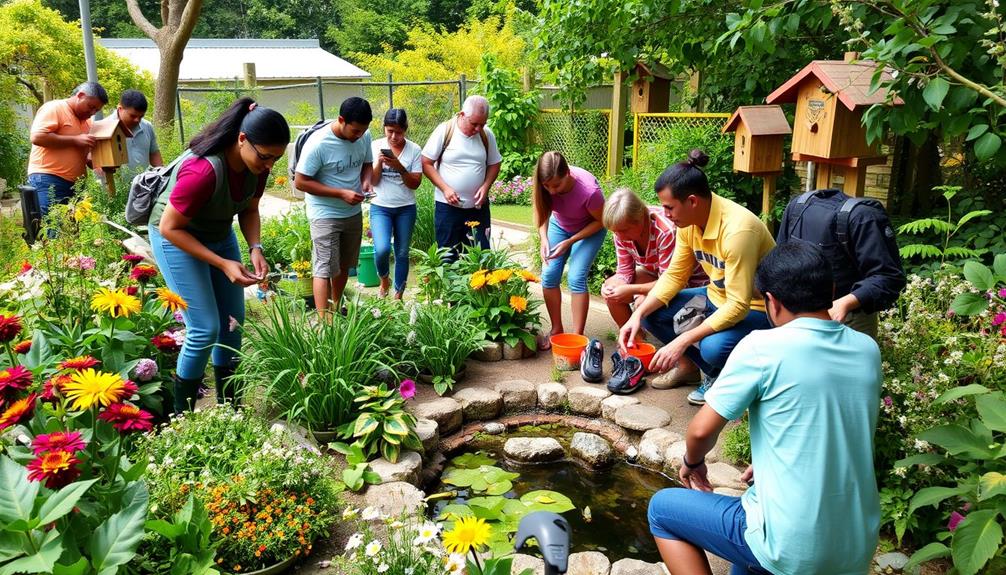
Taking action as an individual can make a significant impact on local wildlife and the environment. You have the power to help combat the effects of climate change and support wildlife in your community. Here are three actionable steps you can take:
- Plant native species: By planting native grasses, trees, and shrubs, you can absorb CO2 and create habitats that foster biodiversity.
- Reduce, reuse, recycle: These everyday actions lower your carbon footprint, directly influencing climate change and its impacts on wildlife.
- Volunteer: Get involved with local wildlife refuges or clean-up projects to restore habitats and conserve species threatened by climate-related changes.
Additionally, engaging in citizen science initiatives lets you contribute valuable data to environmental research.
Staying informed about climate change and participating in discussions with your local government empowers you to advocate for policies that protect natural spaces.
Every small action counts, and by taking these steps, you can help mitigate the impacts of climate change on local wildlife. Your involvement not only supports the ecosystem but also inspires others to join the cause.
Frequently Asked Questions
How to Help Wildlife With Climate Change?
You can help wildlife by planting native species, removing invasive plants, and creating pollinator gardens. Participate in local restoration projects and advocate for natural spaces to enhance ecosystem resilience against climate change's impacts.
What Impact Is Climate Change Having on Local Wildlife?
Climate change's impact on local wildlife is profound; rising temperatures and altered habitats force species to adapt or migrate. You'll see mismatched breeding seasons and increased competition, threatening survival for many native plants and animals.
How to Support Local Wildlife?
To support local wildlife, remember: "Many hands make light work." Plant native species, create pollinator gardens, volunteer for clean-ups, use reusable items, and advocate for conservation. Your efforts can truly make a difference in their habitats.
How Can We Solve Climate Change Locally?
You can solve climate change locally by planting native species, participating in community clean-ups, engaging in citizen science, advocating for renewable energy policies, and utilizing resources from organizations like the EPA and NOAA.
Conclusion
As you step outside, imagine vibrant forests teeming with life, where birds sing and butterflies dance in the sunlight. Yet, climate change threatens this delicate balance. By taking small actions, like planting native species or reducing waste, you can help protect these precious ecosystems. Picture a future where children marvel at the beauty of nature, their laughter echoing through lush landscapes. Your efforts today can nurture wildlife and guarantee that the symphony of nature continues for generations to come.




